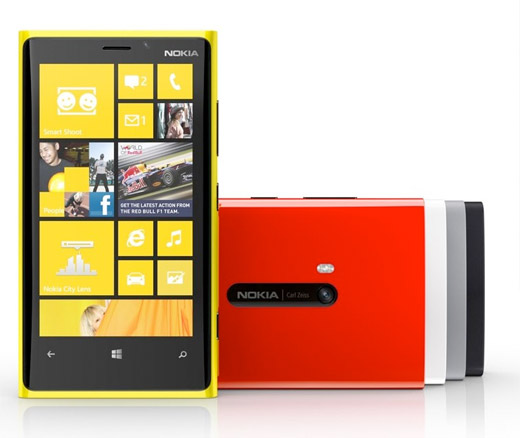Nokia Lumia 920 Windows Phone 8 Review
Introduction and Specifications
In a sense, it feels like Windows Phone 8 is Microsoft's first real foray into the smartphone space post Windows Mobile. Of course, Microsoft made a concerted effort with Windows Phone 7, but there's something vastly different about version 8. WP8 borrows from the underpinnings of Windows Phone 7, but there are so many differences in the operating system -- along with its incompatibility with WP7-class hardware -- that it feels like we're evaluating an entirely new product. And in reality, we are.

Nokia's Lumia 920 is one of the first Windows Phone 8 products, along with HTC's 8X, in a holiday smartphone lineup that has become amazingly crowded. Microsoft is trying its best to carve out a niche despite Windows Phone 8 being overwhelmed on shelves by the iPhone and Android-based products. But Nokia's expertise in the hardware business shines through in the design of this particular phone. A lot is riding on the success of the Lumia 920, not only for Nokia but for Microsoft's mobile team as well.
Before we dig in too deep, let's look at the specifications and take a quick tour of the device:

Nokia's Lumia 920 is one of the first Windows Phone 8 products, along with HTC's 8X, in a holiday smartphone lineup that has become amazingly crowded. Microsoft is trying its best to carve out a niche despite Windows Phone 8 being overwhelmed on shelves by the iPhone and Android-based products. But Nokia's expertise in the hardware business shines through in the design of this particular phone. A lot is riding on the success of the Lumia 920, not only for Nokia but for Microsoft's mobile team as well.
Before we dig in too deep, let's look at the specifications and take a quick tour of the device:
|
| Processor and memory |
1.5GHz dual-core Snapdragon processor 1GB internal ROM, 1GB internal RAM Up to 32GB internal memory included (non-expandable) |
| Operating System |
Windows Phone 8 |
| Connectivity |
LTE Band 17 (700) LTE Band 4 (1700/2100) GSM/EDGE: 850, 900, 1800, 1900 MHz UMTS: 850/900/1700/1900 HSDPA (21.1Mbps) / HSUPA Bluetooth 3.0 Wi-Fi (802.11a/b/g/n) GPS with navigation capability microUSB Mobile Hotspot (up to 5 devices supported) |
| Display |
4.5-inch PureMotion HD+ ClearBlack Screen (1280x768; 332ppi) |
| Size and weight |
5.13" x 2.79" x 0.42" 6.5 ounces |
| Cameras and multimedia |
8 megapixel rear-facing camera with HD camcorder 1.2MP front-facing camera Internet Explorer 10 (no Flash support) 3.5mm headset jack |
| Battery |
2000mAh Li-ion |
| Availability |
Available from AT&T (starts at $99.99 on 2-year contract) |
| In-Box Content |
Battery Charger USB Cable Stereo Headset |

From a technical perspective, what's immediately clear is that Windows Phone 8 hardware has finally caught up to the iPhone and high-powered Android phones that the platform is competing with. WP8 added support for high-res displays, NFC, wireless charging and multi-core processors. All of those things were necessary to truly rival Android and iOS in terms of features and potential performance.
Let's delve deeper into Microsoft's new handset OS, its capabilities and this new flagship smartphone by Nokia.






